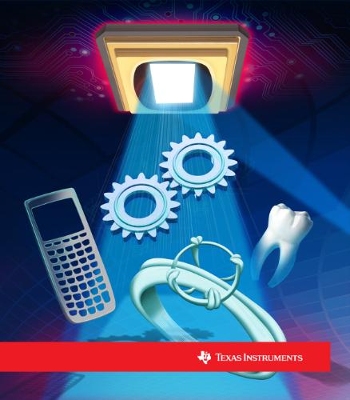 When you think of Dallas-based semiconductor designer and manufacturer Texas Instruments (NASDAQ: TXN), you likely get flashbacks to middle and high school math classes where you had to use a TI graphing calculator to plot points along a specific curve. When it comes to 3D scanning or printing, the company’s name is rarely mentioned.
When you think of Dallas-based semiconductor designer and manufacturer Texas Instruments (NASDAQ: TXN), you likely get flashbacks to middle and high school math classes where you had to use a TI graphing calculator to plot points along a specific curve. When it comes to 3D scanning or printing, the company’s name is rarely mentioned.
Texas Instruments, however, manufactures chipsets used within DLP projectors, a key technology used within certain stereolithography-based 3D printers. Stereolithography is the process of curing a photosensitive resin via UV light, whether it’s a laser, a DLP projector, or some other source. Printers relying on DLP technology can cure entire layers of an object at one time, often leading to faster print speeds.
Today, Texas Instruments announced two very impressive high-resolution DLP chipsets for 3D printing, 3D machine vision, and lithography applications. The DLP9000 and DLP6500 digital micromirror devices (DMDs) have been unveiled in addition to a DLPC900 controller for the programming of each of these chipsets. This release could have major implications within the 3D printing space, as the new chipsets will allow for extremely high resolution at affordable pricing.
The DLP9000 enables up to a 2560 x 1600 micromirror array, equating to over four million single pixels. It features a 7.6-um micromirror pitch and a 0.9 inch micromirror array diagonal. It is the most advanced high-resolution chip within Texas Instruments’ broad market DLP portfolio. Because of its high resolution, this  is a great chip for top-of-the-line DLP-based 3D printers, as precise objects can be fabricated within short periods of time.
is a great chip for top-of-the-line DLP-based 3D printers, as precise objects can be fabricated within short periods of time.
For those manufacturers looking for a more affordable option, then the DLP6500 may do. With compatibility with a 1920 x 1080 array, equating to over two million pixels, this chip can still be used within high-resolution 3D printers. Like the DLP9000, it has a 7.6-um micromirror pitch, but a smaller 0.65 inch micromirror array diagonal. According to Texas Instruments, the following are some of the key features and benefits to both of these new chipsets:
- Scalable portfolio that enables the flexibility to choose the right performance and price point, enabling these chips to be utilized in a variety of different types of printers.
- Programmable pattern rates of up to 9,500 Hz for fast 3D measurements and product builds.
- Optimization for 400 nm to 700 nm wavelengths.
- Compatibility with many popular photosensitive resins used during 3D printing.
With more and more large corporations spending an increasing portion of their R&D budgets on the technologies behind 3D printing, the trend for more affordable, yet higher-quality, machines should continue to increase on pace. We are at the very beginning of what should be an explosion of uses for these types of technologies, and companies like TI understand that they must establish themselves within the industry early on.
Let’s hear your thoughts on Texas Instruments’ new DLP chipsets in the TI DLP 9000 & DLP6500 forum thread on 3DPB.com.
Subscribe to Our Email Newsletter
Stay up-to-date on all the latest news from the 3D printing industry and receive information and offers from third party vendors.
You May Also Like
HP & INDO-MIM Collaborate to Boost Metal 3D Printing in India
HP Inc. and INDO-MIM, a US- and India-based supplier of metal injection molding (MIM) powders and contract manufacturer, have announced that the two companies will collaborate to accelerate additive manufacturing...
3D Printing News Briefs, April 13, 2024: Robotics, Orthotics, & Hypersonics
In 3D Printing News Briefs today, we’re focusing first on robotics, as Carnegie Mellon University’s new Robotics Innovation Center will house several community outreach programs, and Ugogo3D is now working...
3D Printing & the Military: Squandered Opportunities
Previous articles in this series have explored the potential for the U.S. to leverage additive manufacturing to its advantage. However, this potential may be undermined by a propensity for creating...
3D Printing & the Military: It Takes a Village to Make a Nuclear Bomb
In previous installments in this series, we explored how the U.S. military is preparing to utilize additive manufacturing (AM) technologies. Then, in another article, we discussed the idea that possessing...
































